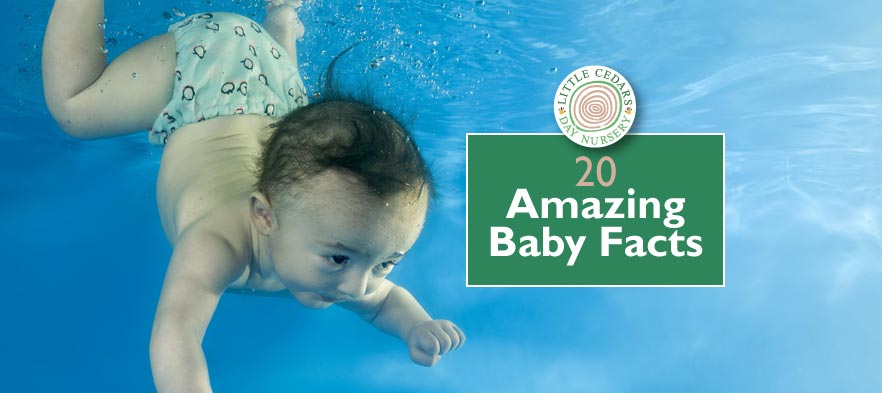
When preparing articles for this website, we often spot interesting baby facts that may surprise people. So, today, we thought we’d share 20 or so of our most surprising discoveries with you. Many are a reminder of just how amazing babies really are!
1. Twenty Babies Born A Minute
Did you know, one baby is born every three seconds. That’s 20 every minute, 1200 every hour and nearly 29,000 every single day.
2. Rapidly Expanding Brains
A baby’s brain will more than double in size in their first year. By the time they’re five, it will have tripled in size compared to its size at birth. The brain will not finish fully developing, however, until the individual reaches their twenties. The brain of newborn boys may also grow faster in the first 3 months than that of newborn girls. It’s something that’s keenly debated amongst experts, though.
 3. Almost 50% More Bones Than Adults
3. Almost 50% More Bones Than Adults
Babies are born with more bones than adults. In time, some will harden and fuse together into just a single bone. Babies’ heads have soft spots when newly born, but which don’t last. That’s because various, separate, bones form their skull at birth. Initially these are connected by something called ‘noggin’, but later the separate skull bones fuse together. Babies are born with around 300 bones. By the time they’re adult’s they will have just 206.
4. But No Kneecaps
Babies do not have kneecaps when they’re born! Had you ever noticed? These finish appearing only once the baby reaches at least 6 months of age.
5. Amazing Taste
Babies have about 30,000 taste buds when they’re born. This is three times as many as adults. This is accounted for by the baby having taste buds not only on their tongue, but also on the sides and roof of their mouths as well as on the tonsils and back of the throat. Despite this, they apparently can’t taste salt until they’re about 4 months old.
 6. Not So Hot on Eye Sight
6. Not So Hot on Eye Sight
Newborn babies are short sighted, only being able to properly focus on an area 8 to 14 inches in front of them — that’s perfect for seeing mum when being breastfed when you think about it. This area of focus will increase with time, of course, and babies also use their peripheral vision to make up for the lack of deeper focus.
7. Fur, Gills & a Tail — Yes, Really!
According to the experts, foetuses have gills, fur and even a tail during development. All three end up disappearing either before birth or, often in the case of fur, within the first few weeks after being born. The tail will have become the coccyx and the ‘gills’, which are temporary slits (pharyngeal arches) in the neck, will have developed into jaw and ear bones by the time the babies have been born.
8. No Tears for Weeks
Babies don’t cry tears until they’re about a month old. Until then, it’s rather like ‘dry’ crying.
 9. Natural Born Swimmers (… Kind of)
9. Natural Born Swimmers (… Kind of)
Newborns hold their breath underwater automatically and even adapt their heart rate and peripheral blood vessels when doing so. We strongly advise against you testing this, of course, but apparently it’s true. This natural ability does not last past the age of six months, however.
10. Baby Time in the Womb
Some interesting statistics suggest that, on average, female babies remain in the womb a day longer than males, white babies remain there 5 days longer than black babies and Indian babies remain there 6 days longer than white babies. If true and not simply a momentary glitch, the reasons for this are a bit of a mystery.
11. No Memory Before Three
People’s long-term memories go back no earlier, in general, than the age of three. This is believed to be because either memory function hasn’t developed sufficiently until then or because memory may be tied to the ability to understand language.
12. Recognising Day & Night
It can take up to 12 weeks before a baby will recognise the difference between day and night. Hence, the irregular sleep pattern that can last until they’re 5 or so months of age.
13. Eyes to the Right
85% of newborn babies prefer to face to the right when lying on their back. The preference only lasts a few months, but may also be an indicator of whether they’ll turn out to be right-handed or left-handed.
 14. Is Breast Really is Best?
14. Is Breast Really is Best?
As well as protecting against diseases, breastfeeding babies for at least 2 months halves the risk of Sudden Infant Death Syndrome (SIDS) — that’s incredible when you think about it. It also gives greater protection from SIDS the longer you continue.
15. And Breast Milk Adapts Like Magic
Expressed breast milk for a baby should never exceed 4oz per bottle no matter what age they are. While formula-fed infants have bigger bottles as they grow older, babies fed via bottles containing expressed breast milk should stick to 4oz (1 to 1½oz per hour) maximum. That’s because the breast milk adapts itself to their precise needs as they grow; it constantly changes its composition as the child gets older and that includes calorie content contained per ounce. That’s clever!
 16. The Only Smiling Primate
16. The Only Smiling Primate
Human babies are the only primate babies that smile at their mother or father. That’s quite remarkable, although we wonder whether other primates have a different way of smiling that we don’t recognise or understand.
17. Special Birth Months
According to statistics, the most common date of birth is the 9th of September. This is closely followed by the 19th, 12th and 17th of September, in that order. Interestingly, babies born around this time stand the best chance of being the smartest in the class and going on to have the greatest success in life. We considered whether this could be linked to school starting in September, making these children the oldest, most mature pupils in the class at a time when learning and development is so crucial.
Meanwhile, people born in October seem to live the longest, living on average 160 more days than those born in the Spring.
Scientific evidence also points to the month of birth affecting personality. For example, those born in the summer months having the most optimistic outlooks.
18. And the Not So Special
Meanwhile, December, January and February are the least common months for births, with December 25th and 26th seeing the fewest during the entire year.
 19. Outcomes of Being First Born
19. Outcomes of Being First Born
Children who are first-born are 1.7 times more likely than their younger siblings to live to the age of one hundred. Those with young mothers at birth stand the greatest chance of doing so. The first born is statistically more likely to have better mental health but have a slightly higher propensity to be overweight or have high blood pressure. Firstborns are often natural leaders but younger siblings may experience that simply as bossiness when growing up!
20. The Origins of ‘Infant’
The term ‘infant’ comes from the Latin ‘infans’, which means ‘unable to speak‘ … which makes sense, when you think about it.
We hope that you have found these surprising facts of interest and have perhaps learned something you didn’t know before — we certainly enjoyed putting them together for you.
High Quality Childcare in Streatham
 We are Little Cedars, a pre-school and childcare nursery in Streatham. As well as being one of the best nurseries in the London SW16 area, we would also make a convenient choice for anyone requiring childcare nurseries, pre-schools or playgroups in/around Balham, Tooting, Norbury, Colliers Wood, Furzedown, Streatham Common, Streatham Hill and Streatham Park. Why not book a visit, register for a nursery place, or ask any questions — our childcare professionals are here to help:
We are Little Cedars, a pre-school and childcare nursery in Streatham. As well as being one of the best nurseries in the London SW16 area, we would also make a convenient choice for anyone requiring childcare nurseries, pre-schools or playgroups in/around Balham, Tooting, Norbury, Colliers Wood, Furzedown, Streatham Common, Streatham Hill and Streatham Park. Why not book a visit, register for a nursery place, or ask any questions — our childcare professionals are here to help:

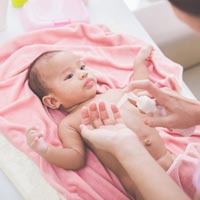 3. Almost 50% More Bones Than Adults
3. Almost 50% More Bones Than Adults 6. Not So Hot on Eye Sight
6. Not So Hot on Eye Sight 9. Natural Born Swimmers (… Kind of)
9. Natural Born Swimmers (… Kind of) 14. Is Breast Really is Best?
14. Is Breast Really is Best? 16. The Only Smiling Primate
16. The Only Smiling Primate 19. Outcomes of Being First Born
19. Outcomes of Being First Born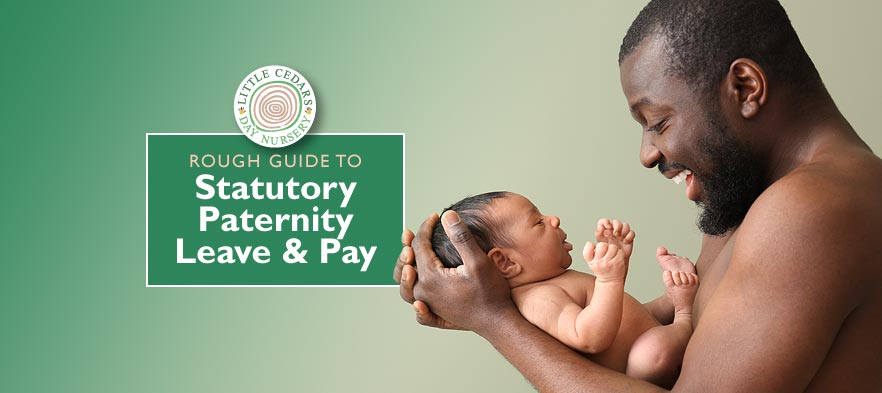
 Following up from our
Following up from our 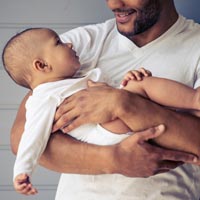 The father, or partner of the mother, must give their employer at least 15 weeks’ advance notice that they wish to take Statutory Paternity Leave. This can be imprecise, however, given that they won’t be 100% certain which day the child(ren) will be born. If they later change the proposed date, employers must be given at least 28 days (4 weeks) notice of the change, made in writing if requested by the employer.
The father, or partner of the mother, must give their employer at least 15 weeks’ advance notice that they wish to take Statutory Paternity Leave. This can be imprecise, however, given that they won’t be 100% certain which day the child(ren) will be born. If they later change the proposed date, employers must be given at least 28 days (4 weeks) notice of the change, made in writing if requested by the employer. the child’s father, or
the child’s father, or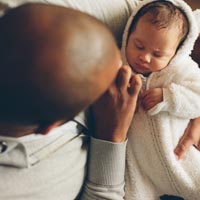 To be eligible for Statutory Paternity Pay, a person needs to:
To be eligible for Statutory Paternity Pay, a person needs to: The payments are made through their wages by the employer after deducting any tax and National Insurance if due. (Figures correct at September 2021).
The payments are made through their wages by the employer after deducting any tax and National Insurance if due. (Figures correct at September 2021).
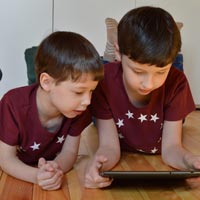 Recent studies show that use of connected screens and devices by children, including under-fives, is growing fast. The pandemic appears to have increased kids’ screen use too, as children have spent more time indoors and less time playing ‘in person’ with friends.
Recent studies show that use of connected screens and devices by children, including under-fives, is growing fast. The pandemic appears to have increased kids’ screen use too, as children have spent more time indoors and less time playing ‘in person’ with friends. Over 75% of children under five have access to a connected device, with up to 60% of preschoolers actually owning their own.
Over 75% of children under five have access to a connected device, with up to 60% of preschoolers actually owning their own.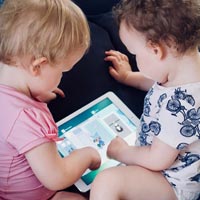 “Parents have always played a huge role in curating what [under-fives] consume and how their time is spent, but toddlers are now confidently navigating digital platforms for themselves, and using touchscreen devices with purpose and determination.” (Childwise)
“Parents have always played a huge role in curating what [under-fives] consume and how their time is spent, but toddlers are now confidently navigating digital platforms for themselves, and using touchscreen devices with purpose and determination.” (Childwise) that the ‘RF wireless radiation’ emitted by Wi-Fi connected screens and devices may carry potential health risks particularly, they argue, for pregnant women, their unborn foetuses and the young. The very young, of course, have brains that are still at a critical development stage. For this reason, the experts concerned advocate that access to devices like mobile phones should be limited, removed from children’s bedrooms at night or, at the very least, placed in Flight Mode when possible. Using devices wired instead of using Wi-Fi apparently reduces risks. Use of them in hands-free mode is another useful approach, so that the devices are not so close to youngsters’ heads. We’re not experts ourselves, but these measures seem like sensible precautions.
that the ‘RF wireless radiation’ emitted by Wi-Fi connected screens and devices may carry potential health risks particularly, they argue, for pregnant women, their unborn foetuses and the young. The very young, of course, have brains that are still at a critical development stage. For this reason, the experts concerned advocate that access to devices like mobile phones should be limited, removed from children’s bedrooms at night or, at the very least, placed in Flight Mode when possible. Using devices wired instead of using Wi-Fi apparently reduces risks. Use of them in hands-free mode is another useful approach, so that the devices are not so close to youngsters’ heads. We’re not experts ourselves, but these measures seem like sensible precautions. While time spent by children on connected screens and devices is rising, it’s not all bad news. The pandemic has also seen an increase in the time that parents have been spending with children, including on shared screen viewing as well as on other pastimes like baking, crafts and family activities. At the end of the day, it’s all about a healthy balance and, of course, adult supervision to ensure children’s wellbeing at all times.
While time spent by children on connected screens and devices is rising, it’s not all bad news. The pandemic has also seen an increase in the time that parents have been spending with children, including on shared screen viewing as well as on other pastimes like baking, crafts and family activities. At the end of the day, it’s all about a healthy balance and, of course, adult supervision to ensure children’s wellbeing at all times.

 Streatham was the birthplace, home or workplace of a huge number of famous people. Just a few include:
Streatham was the birthplace, home or workplace of a huge number of famous people. Just a few include: Henry Robertson Bowers, one of the explorers on the ill-fated Terra Nova exploration of the Antarctic with Robert Falcon Scott (better known as Scott of the Antarctic), lived in Streatham and attended Streatham High School for Boys in Pinfold Road.
Henry Robertson Bowers, one of the explorers on the ill-fated Terra Nova exploration of the Antarctic with Robert Falcon Scott (better known as Scott of the Antarctic), lived in Streatham and attended Streatham High School for Boys in Pinfold Road. Super-model Naomi Campbell was born in Streatham in 1970, the maternal daughter of a professional dancer, but never met her father.
Super-model Naomi Campbell was born in Streatham in 1970, the maternal daughter of a professional dancer, but never met her father. Rapper ‘Dave’ Orobosa Omeregie, also known as ‘Santan Dave’ was born in Streatham and has since scored several top-20 records and a number 1 single, as well as winning several high profile awards. One of his top ten singles was even called ‘Streatham’.
Rapper ‘Dave’ Orobosa Omeregie, also known as ‘Santan Dave’ was born in Streatham and has since scored several top-20 records and a number 1 single, as well as winning several high profile awards. One of his top ten singles was even called ‘Streatham’. The fashion designer John Galliano lived in Streatham from the age of six, until moving later to Dulwich and subsequently other parts of London.
The fashion designer John Galliano lived in Streatham from the age of six, until moving later to Dulwich and subsequently other parts of London. Comedians Eddie Izzard and Paul Merton both have links to Streatham. Eddie used to host a comedy club there, in the White Lion pub. Apparently he often practised his lines when walking around Streatham Common.
Comedians Eddie Izzard and Paul Merton both have links to Streatham. Eddie used to host a comedy club there, in the White Lion pub. Apparently he often practised his lines when walking around Streatham Common. 007 Actor Roger Moore lived in Streatham, with his then wife Doorn Van Steyn and her family, when he was just 18.
007 Actor Roger Moore lived in Streatham, with his then wife Doorn Van Steyn and her family, when he was just 18. Ken Livingstone was born at 21 Shrubbery Road, Streatham, in 1945 and also later attended the Philippa Fawcett Teacher Training College there. He was an MP, leader of the GLC, and later Mayor of London.
Ken Livingstone was born at 21 Shrubbery Road, Streatham, in 1945 and also later attended the Philippa Fawcett Teacher Training College there. He was an MP, leader of the GLC, and later Mayor of London.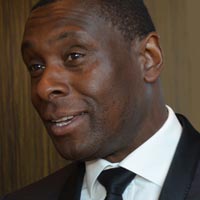 The actor and presenter David Harewood MBE, also lives in Streatham. He is most famous for his role as a CIA operative in the popular American series Homeland.
The actor and presenter David Harewood MBE, also lives in Streatham. He is most famous for his role as a CIA operative in the popular American series Homeland. Even Brad Pitt has connections to Streatham! He was filmed during a fight scene for the movie Snatch at what was then Caesar’s Nightclub at 156 Streatham Hill.
Even Brad Pitt has connections to Streatham! He was filmed during a fight scene for the movie Snatch at what was then Caesar’s Nightclub at 156 Streatham Hill. Speaking of The Rolling Stones, Bill Wyman, their bassist, worked for a time as a storekeeper and progress clerk. He earned £11 per week at John A. Sparks, the diesel engineers at Streatham Hill.
Speaking of The Rolling Stones, Bill Wyman, their bassist, worked for a time as a storekeeper and progress clerk. He earned £11 per week at John A. Sparks, the diesel engineers at Streatham Hill. June Whitfield, the actress, was born in Streatham in 1925 and later attended Streatham Hill High School.
June Whitfield, the actress, was born in Streatham in 1925 and later attended Streatham Hill High School. Famous comedian Tommy Trinder was born at 54 Wellfield Road, Streatham, in 1909. Many will remember him for his catchphrase, “You lucky people!” from the pre- and post-WW2 era.
Famous comedian Tommy Trinder was born at 54 Wellfield Road, Streatham, in 1909. Many will remember him for his catchphrase, “You lucky people!” from the pre- and post-WW2 era. Another former Prime Minister, John Major, also lived for a time in Streatham with his wife, Norma, at Primrose Court. He had bought the property in 1969.
Another former Prime Minister, John Major, also lived for a time in Streatham with his wife, Norma, at Primrose Court. He had bought the property in 1969.
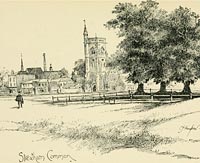




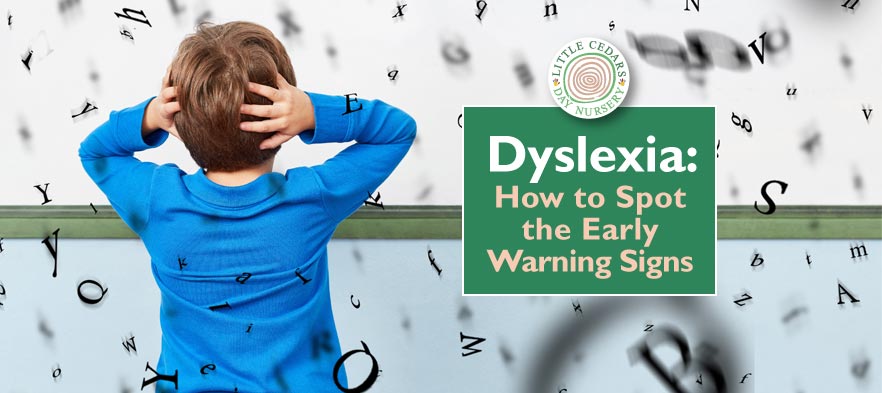
 Despite many dyslexic people being highly intelligent, dyslexia makes it difficult for them to recognise words and/or be able to break them down into their smaller components. It is recognised as a Specific Learning Difficulty (‘SpLD’) and can seriously affect their education if not recognised and addressed early.
Despite many dyslexic people being highly intelligent, dyslexia makes it difficult for them to recognise words and/or be able to break them down into their smaller components. It is recognised as a Specific Learning Difficulty (‘SpLD’) and can seriously affect their education if not recognised and addressed early. Such an affliction can have profound implications for a person. It will adversely affect their reading, writing and comprehension, thereby limiting their overall learning capability and hindering overall literacy. These are particularly critical skills during their early years as that’s at the start of their education, when the knock-on effects of such limiting factors will be at their most significant. It will slow down their progress in many topics and areas of education, also leading potentially to lower self-confidence and possibly even getting them mislabelled as ‘slow’ or ‘lazy’ by the unenlightened. Ultimately, it can severely limit their potential careers and life outcomes.
Such an affliction can have profound implications for a person. It will adversely affect their reading, writing and comprehension, thereby limiting their overall learning capability and hindering overall literacy. These are particularly critical skills during their early years as that’s at the start of their education, when the knock-on effects of such limiting factors will be at their most significant. It will slow down their progress in many topics and areas of education, also leading potentially to lower self-confidence and possibly even getting them mislabelled as ‘slow’ or ‘lazy’ by the unenlightened. Ultimately, it can severely limit their potential careers and life outcomes. Children finding it difficult to learn the alphabet;
Children finding it difficult to learn the alphabet; The child describing words and letters as visually jumbling, blurring or even moving around when they try to read them;
The child describing words and letters as visually jumbling, blurring or even moving around when they try to read them;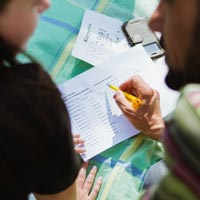 There is no cure for dyslexia, but measures to mitigate its effects can be taken by education professionals, parents, carers and even those affected by it. It’s incredibly important, though, for both parents and education professionals to try to recognise it early, for example at nursery or pre-school, so that a suitable teaching programme can be introduced as early as possible.
There is no cure for dyslexia, but measures to mitigate its effects can be taken by education professionals, parents, carers and even those affected by it. It’s incredibly important, though, for both parents and education professionals to try to recognise it early, for example at nursery or pre-school, so that a suitable teaching programme can be introduced as early as possible.
 The EYFS framework sets the statutory approach required for pretty much every aspect of early years childcare and education provision in the UK. The standards cover the learning and development programmes, learning goals, approach to assessment, safeguarding, welfare of children, staffing, and much more. In this guide, however, we’ll focus purely on the 7 key areas of learning and development covered by the EYFS. Essentially, these form the core curriculum at nurseries like Little Cedars Nursery in Streatham. Let’s take a look …
The EYFS framework sets the statutory approach required for pretty much every aspect of early years childcare and education provision in the UK. The standards cover the learning and development programmes, learning goals, approach to assessment, safeguarding, welfare of children, staffing, and much more. In this guide, however, we’ll focus purely on the 7 key areas of learning and development covered by the EYFS. Essentially, these form the core curriculum at nurseries like Little Cedars Nursery in Streatham. Let’s take a look …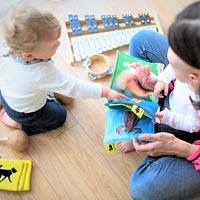 It would be hard to overstate the importance of good communication and language skills, as they underpin early years progress in just about everything else. So, early years providers like Little Cedars encourage two-way interactions and language-rich communications between staff and children right from the outset. Childcare professionals will introduce new vocabulary regularly and help children to understand it and use it themselves through activities like story-telling, role play and question-and-answer sessions. Practitioners will regularly read with (not just to) children, using a wide variety of high quality reading materials, encouraging feedback and engagement from the children as they progress. In this way, new vocabulary is embedded, conversations come naturally and children will thrive in their language and communication skills.
It would be hard to overstate the importance of good communication and language skills, as they underpin early years progress in just about everything else. So, early years providers like Little Cedars encourage two-way interactions and language-rich communications between staff and children right from the outset. Childcare professionals will introduce new vocabulary regularly and help children to understand it and use it themselves through activities like story-telling, role play and question-and-answer sessions. Practitioners will regularly read with (not just to) children, using a wide variety of high quality reading materials, encouraging feedback and engagement from the children as they progress. In this way, new vocabulary is embedded, conversations come naturally and children will thrive in their language and communication skills.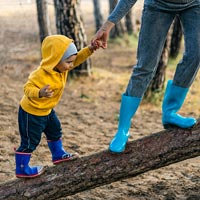 Physical development is, of course, another key skill that is foundational for children. After all, it impacts on health, mobility, strength, fitness, agility, coordination, wellbeing and general happiness. So, great care is taken at nurseries like Little Cedars to help children hone their physical skills and development incrementally, to improve all of the above. This is done through the EYFS programmes that are set and customised for each individual child. Skills like balance, gross and fine motor skills, coordination, spatial awareness, hand/eye coordination, strength and agility will therefore gradually improve and become second nature to each child as they grow. Active children will generally become more healthy children. They will also improve social skills and confidence through the activities that they participate in alongside peers. It is also, of course, great fun!
Physical development is, of course, another key skill that is foundational for children. After all, it impacts on health, mobility, strength, fitness, agility, coordination, wellbeing and general happiness. So, great care is taken at nurseries like Little Cedars to help children hone their physical skills and development incrementally, to improve all of the above. This is done through the EYFS programmes that are set and customised for each individual child. Skills like balance, gross and fine motor skills, coordination, spatial awareness, hand/eye coordination, strength and agility will therefore gradually improve and become second nature to each child as they grow. Active children will generally become more healthy children. They will also improve social skills and confidence through the activities that they participate in alongside peers. It is also, of course, great fun! Health, happiness and even the development of early years cognitive function are all underpinned by children’s personal, social and emotional development (‘PSED’). Indeed, PSED forms the backbone of children’s relationships to all adults and peers around them — and also governs how they feel they fit in. That’s all incredibly important, so childcare settings like Little Cedars Nursery approach PSED as a ‘prime’ element within the EYFS curriculum. The result is that children are supported and support one another, they learn how to manage emotions and behaviours, how to eat healthy diets, look after themselves physically, and independently manage their own personal needs. All of this will have the knock-on effect of improving confidence and self-esteem and even allow them to set some of their own goals. Close bonds will be made with both staff and other children and conflicts will be more easily resolved peaceably.
Health, happiness and even the development of early years cognitive function are all underpinned by children’s personal, social and emotional development (‘PSED’). Indeed, PSED forms the backbone of children’s relationships to all adults and peers around them — and also governs how they feel they fit in. That’s all incredibly important, so childcare settings like Little Cedars Nursery approach PSED as a ‘prime’ element within the EYFS curriculum. The result is that children are supported and support one another, they learn how to manage emotions and behaviours, how to eat healthy diets, look after themselves physically, and independently manage their own personal needs. All of this will have the knock-on effect of improving confidence and self-esteem and even allow them to set some of their own goals. Close bonds will be made with both staff and other children and conflicts will be more easily resolved peaceably. Reading and writing are crucial elements within every child’s education. Without these skills, learning about other topics would become much more difficult. Literacy is therefore a key area of focus within the EYFS learning and development framework. Like other nurseries, pre-schools and childcare settings that adhere to the EYFS approach, Little Cedars Nursery will therefore endeavour to encourage a love of reading within every child. Reading teaches children to comprehend language, vocabulary, grammar and spelling as well as learning more about the underlying topics themselves.
Reading and writing are crucial elements within every child’s education. Without these skills, learning about other topics would become much more difficult. Literacy is therefore a key area of focus within the EYFS learning and development framework. Like other nurseries, pre-schools and childcare settings that adhere to the EYFS approach, Little Cedars Nursery will therefore endeavour to encourage a love of reading within every child. Reading teaches children to comprehend language, vocabulary, grammar and spelling as well as learning more about the underlying topics themselves.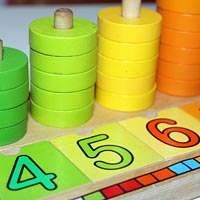 Nurseries, pre-schools, kindergartens and other childcare settings also recognise the importance of mathematics within children’s learning and development. The EYFS curriculum caters well for this, encouraging early years professionals to help children master counting first to 10 and later to 20 and beyond. Children will learn the patterns around numbers, including recognition of odd and even numbers, along with skills like simple addition and subtraction, and the ability to recognise low quantities without having to count. They will also learn to recognise when one quantity is more than, less than or equal to another. In so doing, children will also learn the vocabulary around mathematics in readiness for school once they leave their early years setting.
Nurseries, pre-schools, kindergartens and other childcare settings also recognise the importance of mathematics within children’s learning and development. The EYFS curriculum caters well for this, encouraging early years professionals to help children master counting first to 10 and later to 20 and beyond. Children will learn the patterns around numbers, including recognition of odd and even numbers, along with skills like simple addition and subtraction, and the ability to recognise low quantities without having to count. They will also learn to recognise when one quantity is more than, less than or equal to another. In so doing, children will also learn the vocabulary around mathematics in readiness for school once they leave their early years setting.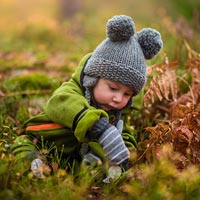 A good early years education is nothing unless children understand the world around them. The EYFS framework used by early years nurseries like Little Cedars builds in programmes to help children learn more about the world. This includes helping them to learn how to observe, recognise, describe and even draw what’s immediately around them as well as exposing them to environments like the natural world, local parks and museums. It even teaches them to recognise similarities and differences between other cultures, religions and communities in the UK and lives being lived abroad. They will get to know more about people’s roles in society too, for example through visits from police officers, firefighters and nurses. A broad range of written material (both fiction and non-fiction) will inform them further. Topics explored will touch on culture, technology, ecology, religion, community, nature and much, much more. This will enrich their knowledge and understanding of the world they live within, giving context to what they see, hear and read about as they grow older.
A good early years education is nothing unless children understand the world around them. The EYFS framework used by early years nurseries like Little Cedars builds in programmes to help children learn more about the world. This includes helping them to learn how to observe, recognise, describe and even draw what’s immediately around them as well as exposing them to environments like the natural world, local parks and museums. It even teaches them to recognise similarities and differences between other cultures, religions and communities in the UK and lives being lived abroad. They will get to know more about people’s roles in society too, for example through visits from police officers, firefighters and nurses. A broad range of written material (both fiction and non-fiction) will inform them further. Topics explored will touch on culture, technology, ecology, religion, community, nature and much, much more. This will enrich their knowledge and understanding of the world they live within, giving context to what they see, hear and read about as they grow older.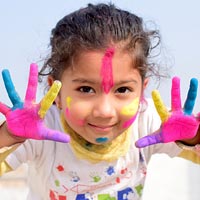 Expressive arts and design are also integral elements within the EYFS curriculum. Early years childcare settings like Little Cedars ensure that children are given a wide range of opportunities to be creative and to free their imaginations. A huge variety of media, materials, tools and activities can be used by children to express themselves and communicate both visually and audibly. Colour, texture, form and function are explored along with opportunities for role play, story-telling, poetry, singing, performance and even dancing when appropriate.
Expressive arts and design are also integral elements within the EYFS curriculum. Early years childcare settings like Little Cedars ensure that children are given a wide range of opportunities to be creative and to free their imaginations. A huge variety of media, materials, tools and activities can be used by children to express themselves and communicate both visually and audibly. Colour, texture, form and function are explored along with opportunities for role play, story-telling, poetry, singing, performance and even dancing when appropriate.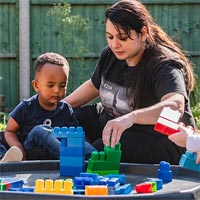 Little Cedars Nursery (Streatham) uses the EYFS framework to shape the educational activities and programmes that babies and children experience at the nursery. Part of this includes the setting of learning goals that each child needs to work towards as they gradually approach the age of 5, when they will move on to school. These are individual goals, tailored to the unique needs, interests, abilities – and any disabilities – of each individual child. A continuous regime of assessment will be undertaken by staff to monitor each child’s progress during their time with the nursery, with the learning programme adjusted, as necessary, along the way. A ‘Key Person’, allocated to each child, facilitates that assessment proactively. Additionally, staff will regularly engage with parents or carers/guardians to ensure that progress towards the learning and development goals is continued at home, wherever possible. Progress is communicated and a learning journal retained and available to parents at any time. In this way, each child achieves personal bests in all areas and everyone is kept up-to-date with the child’s progress.
Little Cedars Nursery (Streatham) uses the EYFS framework to shape the educational activities and programmes that babies and children experience at the nursery. Part of this includes the setting of learning goals that each child needs to work towards as they gradually approach the age of 5, when they will move on to school. These are individual goals, tailored to the unique needs, interests, abilities – and any disabilities – of each individual child. A continuous regime of assessment will be undertaken by staff to monitor each child’s progress during their time with the nursery, with the learning programme adjusted, as necessary, along the way. A ‘Key Person’, allocated to each child, facilitates that assessment proactively. Additionally, staff will regularly engage with parents or carers/guardians to ensure that progress towards the learning and development goals is continued at home, wherever possible. Progress is communicated and a learning journal retained and available to parents at any time. In this way, each child achieves personal bests in all areas and everyone is kept up-to-date with the child’s progress.
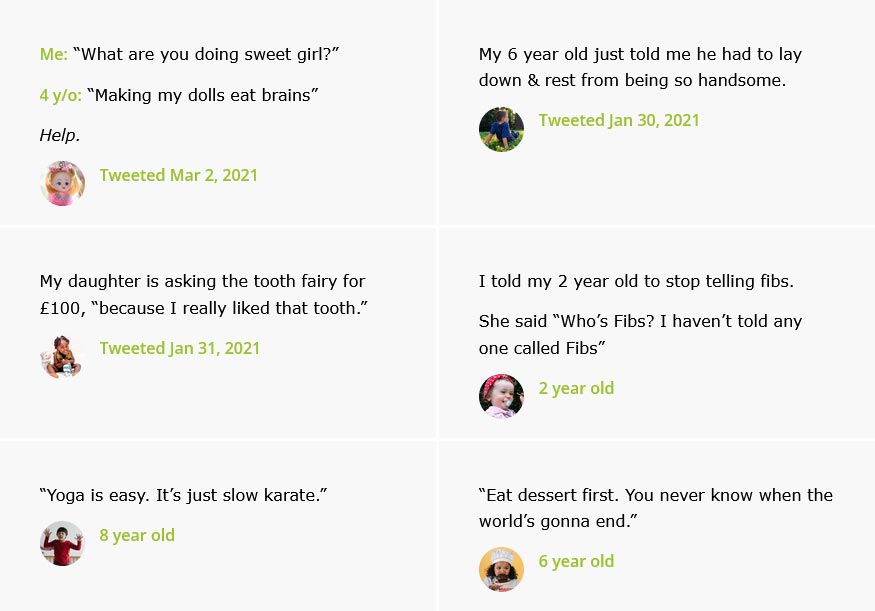
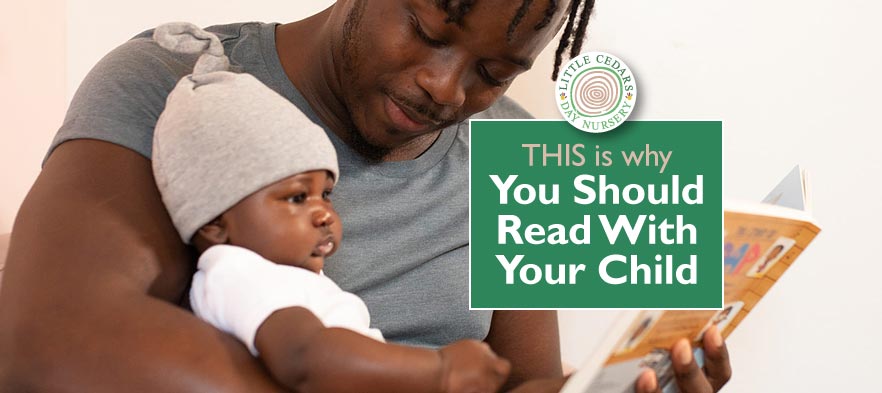
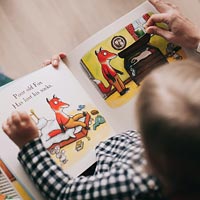 In April last year, we published a compelling article about
In April last year, we published a compelling article about 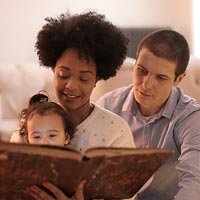 Reading with children also makes the task less daunting, particularly for the youngest children. Reading together also makes it more interesting and more fun. When it’s more interesting and more fun, the child is going to enjoy it more and naturally want to read more often — eventually independently — and all of that is priceless as part of their education and general knowledge going forwards. Reading can also bring parent and child closer through the time spent together. It can be great fun for the adult too, particularly when the child gets older and adults are exposed to classic children’s books that perhaps they were not, themselves, exposed to when they were young.
Reading with children also makes the task less daunting, particularly for the youngest children. Reading together also makes it more interesting and more fun. When it’s more interesting and more fun, the child is going to enjoy it more and naturally want to read more often — eventually independently — and all of that is priceless as part of their education and general knowledge going forwards. Reading can also bring parent and child closer through the time spent together. It can be great fun for the adult too, particularly when the child gets older and adults are exposed to classic children’s books that perhaps they were not, themselves, exposed to when they were young.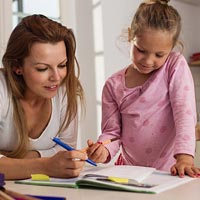 The Nuffield Foundation’s mission is to advance social wellbeing and educational opportunity. In a partnership with the University of Newcastle, the foundation funded a deep study
The Nuffield Foundation’s mission is to advance social wellbeing and educational opportunity. In a partnership with the University of Newcastle, the foundation funded a deep study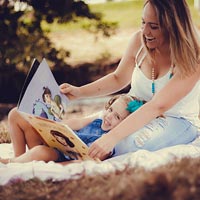 It will come as no surprise, therefore, to learn that we put all of the above into practice at Little Cedars Nursery in Streatham. Getting closely involved in children’s reading, using a huge variety of reading material in an interactive way, gives our nursery children the very best start in life. Indeed, our childcare professionals prepare them thoroughly for school by the time they leave us. They take with them reading, writing, literacy, language, vocabulary and self-expression skills in the process — and all this accomplished at least in part through guided reading.
It will come as no surprise, therefore, to learn that we put all of the above into practice at Little Cedars Nursery in Streatham. Getting closely involved in children’s reading, using a huge variety of reading material in an interactive way, gives our nursery children the very best start in life. Indeed, our childcare professionals prepare them thoroughly for school by the time they leave us. They take with them reading, writing, literacy, language, vocabulary and self-expression skills in the process — and all this accomplished at least in part through guided reading.